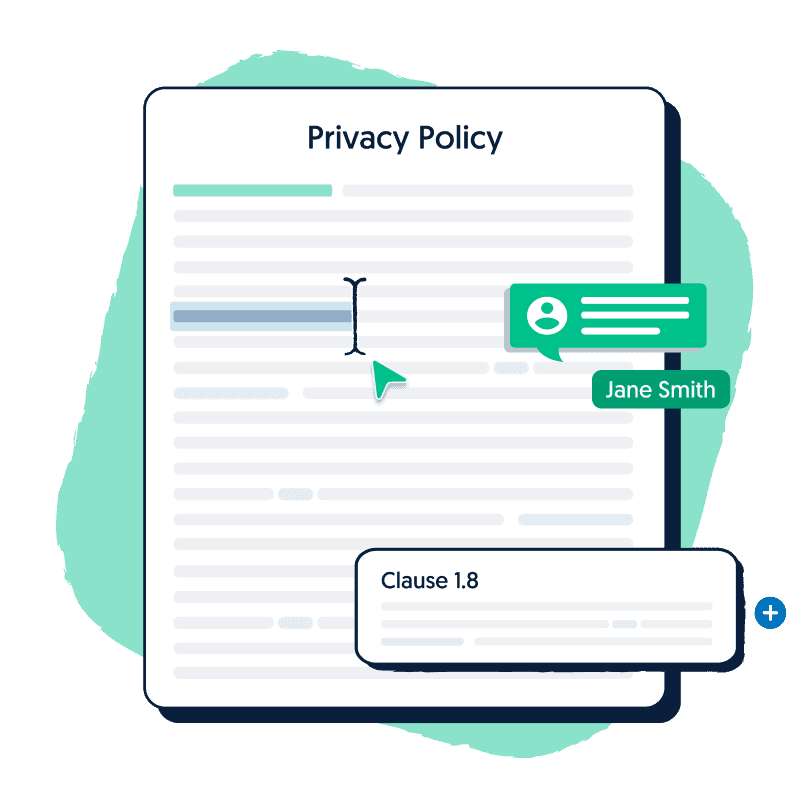Sydney-based lawyer currently working within the Civil Litigation, Dispute Resolution and Public Law division at the NSW Department of Communities & Justice. Prior experience in Commercial Litigation, Property, Banking and Finance. Formerly legal Intern at Lawpath.
💡 Key insights
- Monitoring employees working from home can be legal in Australia if employers follow applicable laws and ensure transparency and fairness.
- In states with workplace surveillance laws, employers must give advance notice before beginning monitoring and clearly inform employees of what is being monitored.
- Monitoring is more likely to be lawful when it involves employer‑provided devices or systems and is used for legitimate business purposes such as safeguarding company data, ensuring productivity, or preventing misuse of resources.
- Surveillance should not unduly intrude on employee privacy, for example monitoring personal communications, private spaces, or non‑work activity may breach laws or workplace protections.
Working from home has exponentially increased since March 2020. As the world transitioned to the ‘new normal’, many of us also shifted to working from home. This has raised the issue now of how employers will monitor employees who are working from home. Workplace surveillance isn’t new, but things became a lot more complicated when the workplace transitioned to the home. In this article, we’ll discuss the rules around monitoring employees who are working from home.
How are Employers Monitoring Workers at Home?
Employers are now turning to time tracking software and surveillance technologies to monitor what their workers are doing at the home office. Before we get into whether or not this is legal, we’ll take you through how exactly this works. Most surveillance technologies now have the ability to take real-time screenshots of what’s on your computer. Examples of time tracking software and surveillance technology include apps such as StaffCop, Teramind, CleverControl, Hubstaff and Time Doctor.
Why are Employers doing this?
Some of these softwares have keystroke logging or capturing, which records the keys you type onto a keyboard and GPS (Global Positioning System) tracking. Your employer is able to track a variety of things you do during work hours. The rationale behind this is to see whether you are using your time in the ‘office’ productively and how much time you are spending on unproductive sites or apps. There’s no doubt that privacy and legal concerns arise from the use of this software. Working from the comfort of our homes can come at a cost. Moreover, this brings us now to the legal protections available to workers.

Get a free Privacy Policy when you sign up to Lawpath today.
A Privacy Policy is required by law in certain circumstances. It outlines how your business will use, store and collect your customers information.
Monitoring Workers at Home: The Push for Legal Change
For employers wanting to monitor employees who are working from home, it’s important to ensure this is consistent with the current laws in place. The problem with privacy laws in Australia is the fact that there’s no absolute right to privacy in our Constitution. We have limited protections under State and Federal acts, which is why there’s been a push for legal change over the years. The need to protect workers working from home has never been more crucial.
Recent Case Law: The Saar Markovitch Case
A recent case on unfair dismissal, heard by the Full Bench of the Fair Work Commission in 2018 is relevant to mention here. It considered the issue of illegally obtained workplace surveillance. The worker, who was a martial arts instructor at Krav Maga, claimed they were unfairly dismissed from their job. The martial arts instructor, Saar Markovitch, was dismissed following his boss’ claim that Markovitch was using his phone instead of supervising the class as shown on CCTV footage. According to the employer, the use of the mobile phone at the Bondi gym was inappropriate and led to his dismissal. This case raised what many have described “new and novel” issues about workplace surveillance. However, with respect to the Markovitch case, the employee was awarded $7,000 in compensation. The Full Bench decided that the employee’s conduct wasn’t serious enough to justify his immediate dismissal from his job. They also found the employer failed to comply with the NSW Workplace Surveillance Act 2005 (NSW).
So, is it Legal to Monitor Employees Working from Home?
Yes. But there are rules employers must be aware of and it’s only legal when done right.
While there’s no absolute right to privacy in Australia, specific workplace surveillance laws do apply. They only happen to exist in New South Wales, The Australian Capital Territory and Victoria so ensure you comply with the relevant workplace surveillance law to your state. This can be found in these acts:
- The Workplace Surveillance Act 2005 (NSW). The Act applies to computer, camera and tracking surveillance. It’s required that employees in NSW must be given at least 14 days’ notice before workplace surveillance takes place. So for employers planning to implement workplace surveillance for workers at home, ensuring sufficient notice and transparency is key; and
- The Workplace Privacy Act 2011 (ACT). Under this law, the use and collection of workplace surveillance is regulated. It applies to optical devices, as well as tracking and data surveillance devices. So, it makes it legal for an employer to use surveillance if it’s for an employment purpose. Note, this only applies to surveillance information that has been made aware to an employee; and
- The Surveillance Devices Act 1999 (Vic). In Vic, it’s an offence to carry surveillance in certain workplace areas. This includes workplace bathrooms, change-rooms or lactation spaces.
Key Takeaways
So, here we have it. Yes, it’s legal to monitor employees who are working from home. There’s no law stating it’s illegal. But it must be done right. It shouldn’t make your employees’ privacy feel threatened or compromised, especially in the comfort of their own homes. In order to make monitoring less intimidating than it is, we recommend you do the following:
- Insert a surveillance clause in your standard employment contract;
- Have a robust and clear workplace surveillance policy to increase transparency and awareness; and
- Only use information and material from surveillance, if it’s for an actual employment purpose.

Get a fixed-fee quote from Australia's largest lawyer marketplace.






